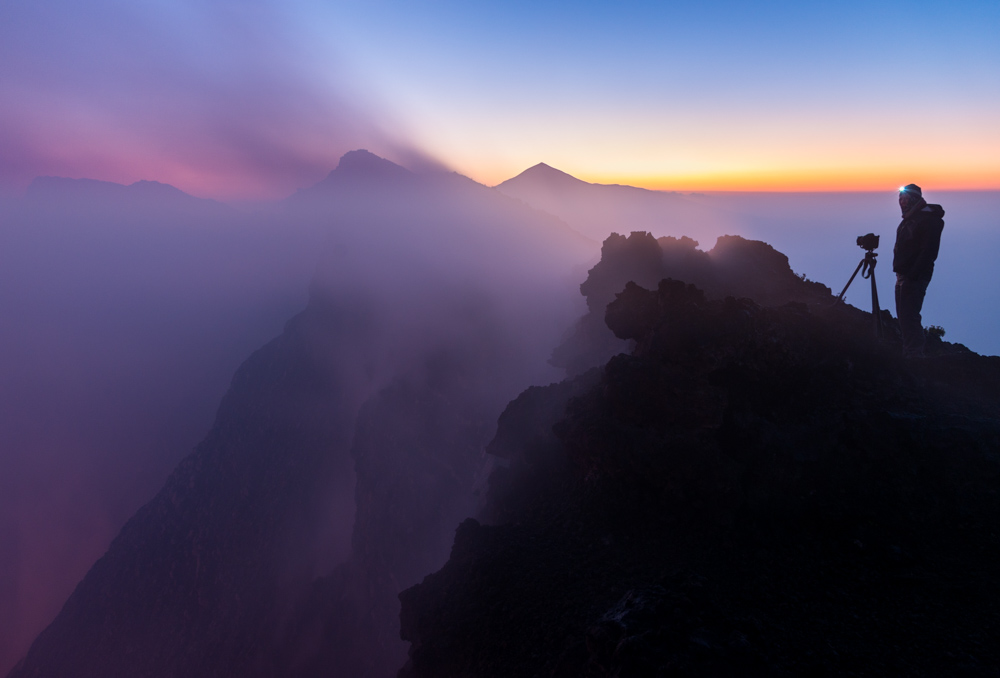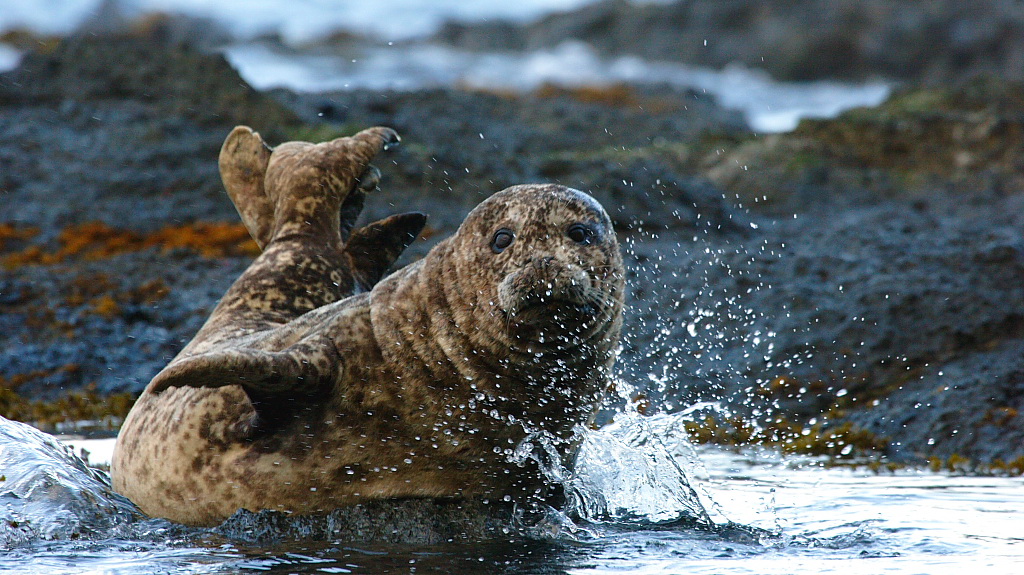Interesting, remote, inaccessible and inspiring destinations we have or may travel to within the next few years!
Date 2019/02/26 11:48:10 by Various
The tourism and travel industry is constantly changing. Travellers now desire ever more vibrant experiences. There is a hunger for joint safaris and increasingly isolated destinations.
We have done some research on a variety of destinations that we would like to travel to purely because of three reasons: the uniqueness of the destination, the remoteness of the destinations location and of course due to its accessibility, thus causing little or no tourist traffic. Some of the destinations we have travelled to over the last 5 years. Below is our selection of 10 interesting destinations that we have travelled to or would like to travel and why we find them so appealing!
1. Lake Baikal – Russia
Lake Baikal is an ancient, massive lake in the mountainous Russian region of Siberia, north of the Mongolian border. It is considered the world’s oldest (35 million years) and deepest freshwater lake. With a depth of more than 1637m at its most profound, with another four-mile-thick layer of sediment further down, the lake’s cold, oxygen-rich waters teem with bizarre life forms. You will find 1455 animal species in the lake that you will not find anywhere else.
Lake Baikal has the purest freshwater water on the planet and is the most transparent of all freshwater lakes. Because of this the ice in many places are completely transparent allowing for some very unique images that you wont be able to capture anywhere else on earth! Powerful textures and colours turn the lake into a landscape photographers dream during the winter months. With cracks in the ice of up to 30km long and 3m wide the lake becomes an ice paradise.
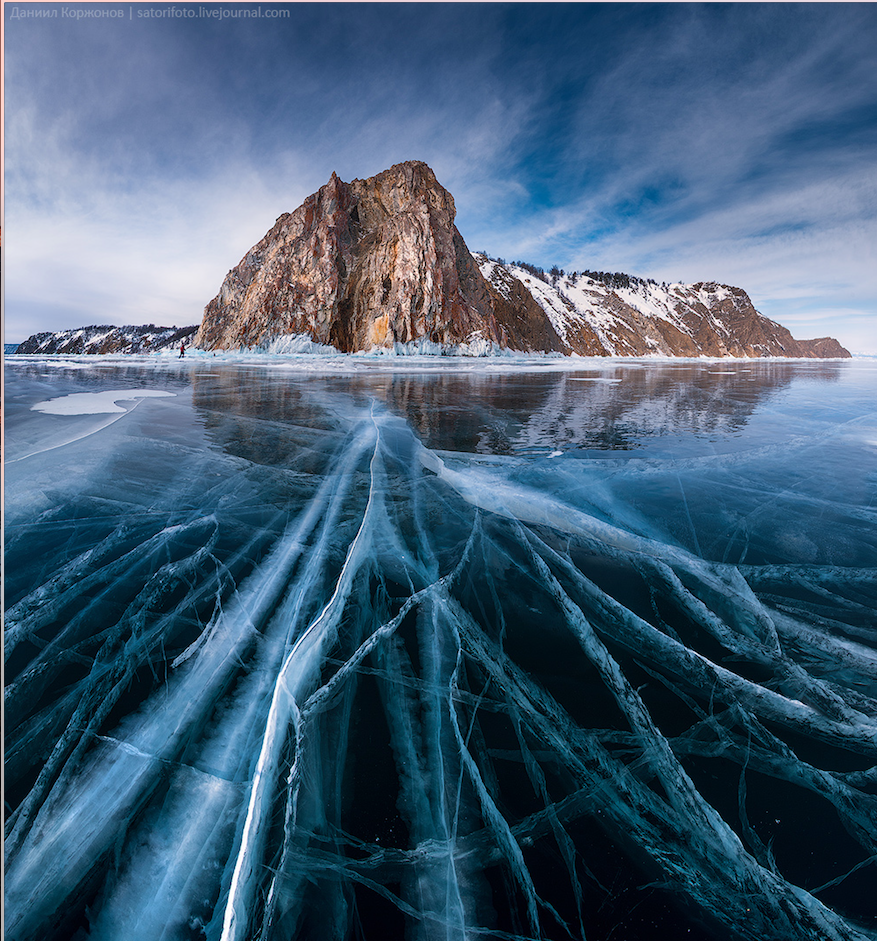
Photo Credit: Daniel Kordan
2. Ennedi Desert - Chad
In the middle of the Sahara at the northeast part of Chad one can find the Ennedi Plateau. The Ennedi Plateau covers an area of approximately 60,000 km2 (23,000 sq. miles), and its highest point is approximately 1,450 m (4,760 ft.) above sea level. The landscape has geological structures like towers, pillars, bridges and arches, which are big tourist attractions.
Travelling to and in this area is very difficult and was once only accessible to the nomadic caravans who crossing the Sahara desert, but now it is accessible by 4x4 vehicles though there are no regular roads in the area.
The sandstone formations make the region on of the interesting places to visit in Chad. The formations seems to come out of the earth resembling fingers and forming hundreds of natural arches, including the great Aloba arch, which has a height of nearly 120 meters. Apart from the geological attractions, examples of petroglyphs or rock paintings are abundant in the area. Many of the rock art represent all kinds of animals that the first inhabitants of the desert had.
Ennedi Desert is a must see when you visit Chad or Africa in general.
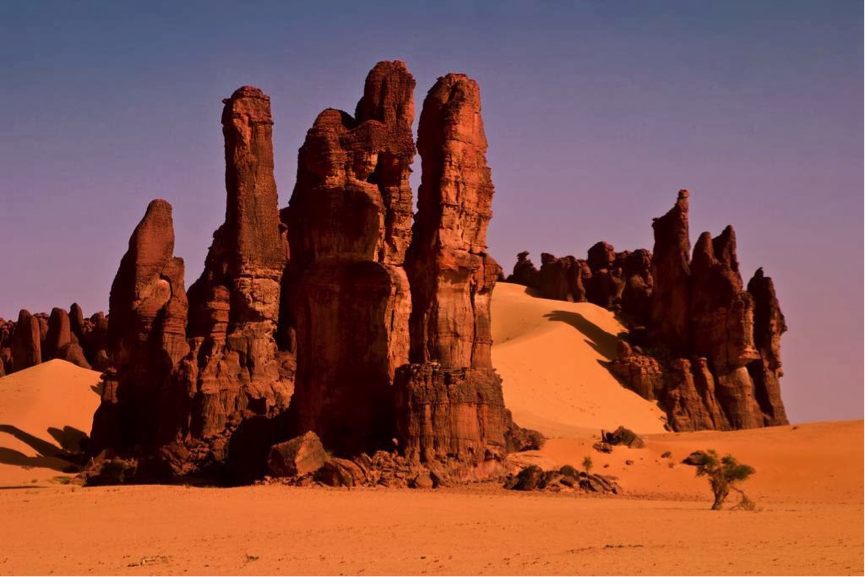
Photo Credits: Franck Zechin
3. Kamchatka Peninsula - Russia
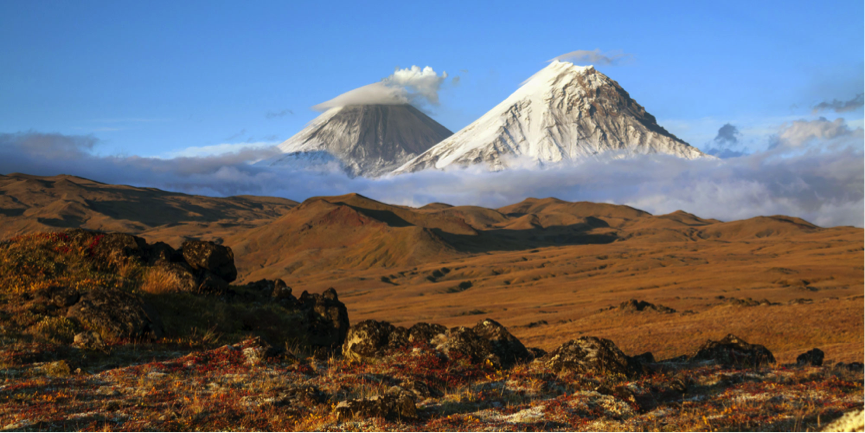
Photo Credit: Alpine interface
Kamchatka Peninsula, Russia has recently been reborn; it was recently shrouded in secrecy and only known to Westerners as a closed military region. With the fall of the Communist Party in the Soviet Union in 1990, the Kamchatka Peninsula was opened to the outside world.
Kamchatka is a 1,250km-long peninsula in the far eastern corner of Russia. Kamchatka is extremely geologically active (with 160 volcanoes of which 29 is still active) and has numerous volcanoes, geysers, hot springs, and even a lake of acid. It contains the southernmost expanse of arctic tundra in the world and is notable for its wealth of arctic wildlife, fish, game, and marine life.
There are few places in the world that can enthral quite like Kamchatka, easily Russia's most scenically dramatic region. A vast volcanic peninsula that is almost entirely wilderness, Kamchatka is a place of extraordinary primal beauty, rushing rivers, hot springs and snow-capped peaks and is any photographer or travellers dream destination. Getting here takes time and effort, and exploring the region even more so, but few visitors leave anything other than awestruck.
4. Franz Josef Land
Situated high in the Arctic Ocean, to the north and east of the already remote Svalbard Archipelago, Franz Josef Land is a difficult and dangerous place to get to. For most of the year it is surrounded by pack ice, making access by boat virtually impossible, but for a few months in the Arctic summer, the ice breaks away and some vessels are able to get in. It is still not a tourism hub; in 2012 there were a total of 8 landings on the island!
For all its difficult access, Franz Josef Land offers up in its wildlife viewing. 85% of the islands are covered in glaciers, meaning stunning and dramatic landscapes almost everywhere you look. And then there are the millions of breeding birds, thousands of walrus and of course a very healthy population of polar bears. Setting foot on these islands is being a true explorer. Almost no one visits these islands at all, so when you do set foot on Franz Josef Land, you will be following in the footsteps of one of the great Arctic explorers, Fritz of Nansen who overwintered here in a small hut. It’s not for the feint hearted, but the rewards are overwhelming!

Photo Credits : National Geographic Explorer
5. Etre Ale volcano in the Danakil Depression – Ethiopia
Located in the Danakil Depression, in Ethiopia. Ethiopia is pondered to be the most misunderstood of all the African countries, as well as one of the worlds most underrated travel destinations. There are few places that resemble the Danakil – you will think you are literally on the edge of the Earth. An ancient seabed of salt, the tip of the Rift Valley fault line and known as the hottest place on earth, the Danakil Depression is like stepping into a Martian landscape. There are few places that resemble the Danakil – you will think you are literally on the edge of the Earth.

Photo Credits: Shem Compion
Etre Ale is one of the few volcanoes on the world that have an almost persistent lava lake. It is recognised as being one of the most active volcanoes in Africa, having hosted an enduring lava lake for longer than 120 years.
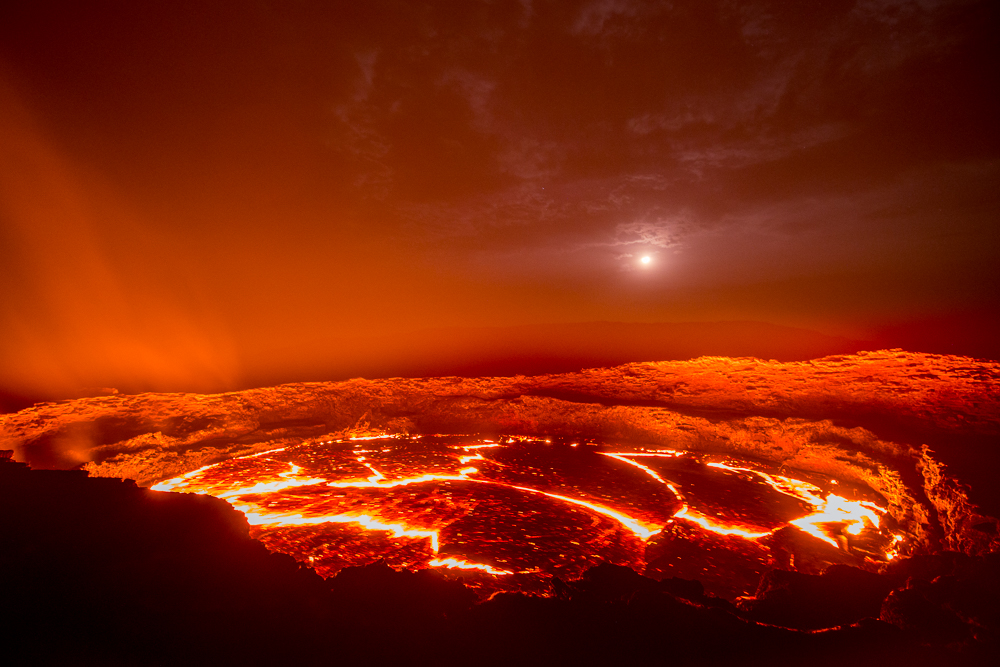
Photo Credits: Shem Compion
Lake Dallol is a sulphurous bubbling lake that has as many colours as the rainbow, boiling out of the desert. It feels like you are on Mars when photographing it: there is no place on earth quite like it. On the seabed, an ancient caravan of camels make a 16-day trek to collect salt blocks carved from the salt base. The imagery is timeless, ancient and extreme. Strings of camels create ethereal images over the desert floor and the men who work the salt block are brilliant subjects to capture.

Photo Credits: Shem Compion
Lake Assal is a thin strip of water on the seabed whose reflection is so perfect, mirror-like images is formed on its surface. Dormant volcanoes and black lava fields back its emerald water. More than 150m below sea level, it’s the lowest point in Africa. The wet section of the lake is a body of extremely salty water fed by hot springs. The dry section features a white salt bed from which lake water evaporated over the years.
In the inhospitable Danakil you can expect high temperatures in a very harsh environment. But in amongst this heat, you can expect to capture images that allure, captivate and thrill.
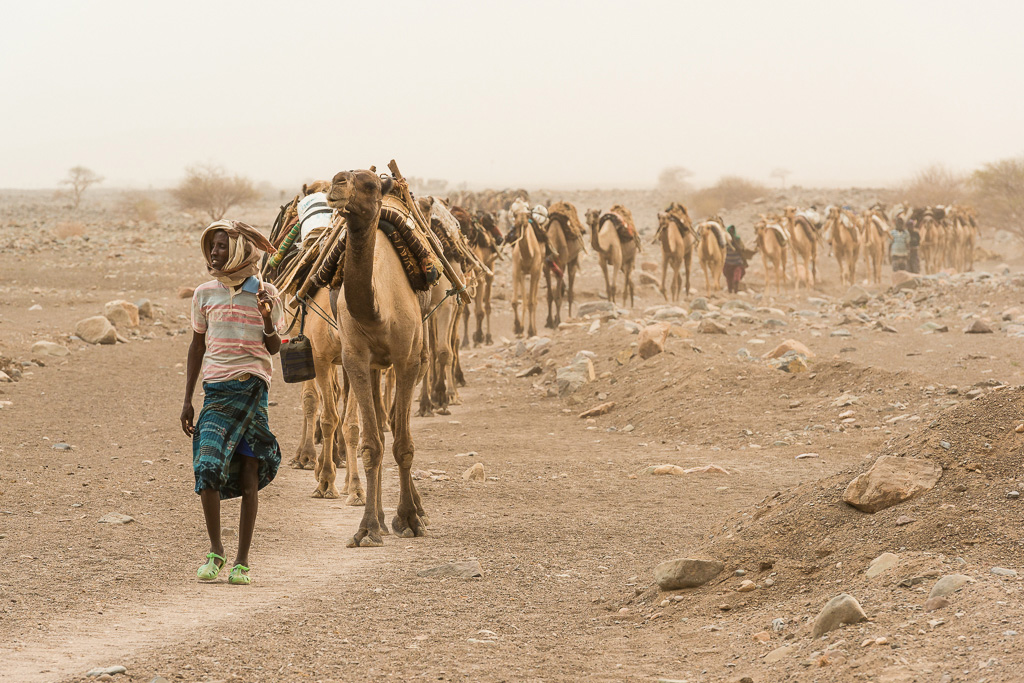
Photo Credits: Shem Compion
6. The DRC:
The Democratic Republic of Congo (DRC) is the southernmost country located in Central Africa and embraces adventure travellers to the ultimate African experience with swathes of rainforests and some of the most exciting trekking, and gushing rivers and not to mention the smouldering volcanoes!
A landscape totally dominated by Volcanoes and one of our closest living relatives is only bound to leave you in ancestral awe of how life on Earth came to be and how it continues to mutate through the process of modification, natures marvellous metamorphosis like that of the grand Charaxes butterfly. Spending a day in search of a relaxed family of gorillas, walking on soft foot-deep leaf litter and humus, an audible surround of unidentifiable bird presence and a canopy of trees above you thriving with more life than we could ever wish to uncover, the sensory overload is intense.
The DRC’s premier national park soars on the edges of the Albertine Rift Mountains shared by Uganda and Rwanda and is home to one-third of all remaining mountain gorillas. Virunga National Park is one of the most biologically diverse protected areas on the planet and is a conservation success story and sensory experiential destination par excellence. The park is also a geologic wonder and contains two of the world’s most active volcanoes.
The Nyiragongo Volcano is the largest lava lake in the world and you will be rewarded with exceptional views around the lake, not to mention looking down you will be hypnotized by a glimpse into the Earth’s core! And, to spend a day using your legs to summit the Nyiragongo Volcano, the largest bubbling mass of lava currently spitting fire from the core of the Earth... there is no definition worthy of this pit of questions and answers. It is true, you can peer into the bellowing mass and ascertain all we ought to understand, and for what lies before you do arise from the very centre of the planet we habituate.
A lot must be thanked to the many people who strive for a working model of eco-tourism-conservation within this confusingly unsettled region.
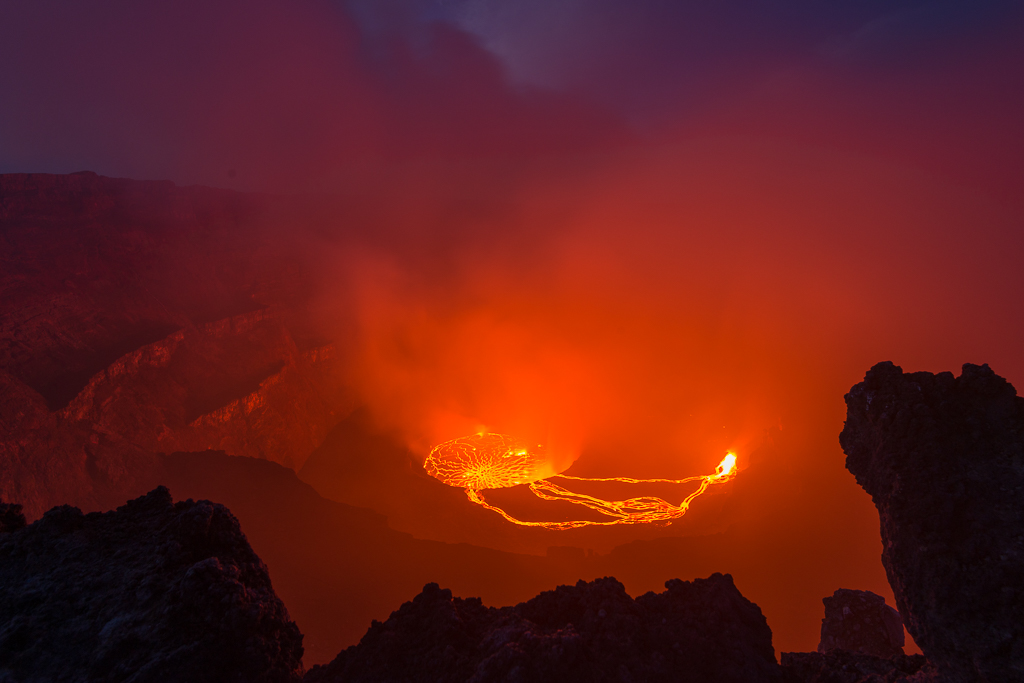

Photo Credits: Shem Compion
7. The Commander Islands
Positioned in the Bering Sea, 175 kilometres to the east of Kamchatka. The Commander Islands are renowned for beautiful tundra landscapes and rich sea polar fauna. Considered as one of the most remote as well as difficult destinations on Earth to reach. Majority of the islands are unpopulated except for one community know as the – Nikolskoye village.
The Commander Islands form the westernmost part of the Aleutian Islands and are the only islands in the chain that belongs to Russia.
Due to the exceptional tundra landscapes and variety of polar fauna, the Commander Islands were incorporated in the UNESCO MAB World Network of Biosphere Reserves. The Islands resides a dense population of mammals and birds and nowhere else in the world will you find such an example on such a small coastal area. The waters around Commander islands are home to 21 whale and aquatic species, fur seals and sea lions. Not to mention the half-million uncommon northern birds meander the skies and nest on these remote islands.
The magnificent sea cliffs, regions of the plain tundra and narrow valleys divided by counterfeiting rivers and streams which form dozens of charming waterfalls are masked by the regular fogs and create the continuously changing marine landscapes that are so exclusive to these islands alone.
To uncover all the natural wonders it is advisable to visit in early summer because it is the best time to witness migrating whales, nesting seabirds, land mammals and wildflowers. The nature on the Commander Islands is the same as it was ages ago so there are still a lot of discoveries and adventures to explore and enjoy!
Photo Credits: Volcano Isalnds
8. Ion Islands
The Ion islands are made up of seven Islands, Kerkyra, Paxi, Lefkada, Ithaca, Kefolonia, Zakynthos and Kythira, located off the west coast of Greece. Paxi is the smallest of the islands and the largest is Cephalonia. The islands are well known for their fishing villages, the variety of wild and exotic fauna and flora, breath-taking beaches that look out to blue green waters, picturesque landscapes covered in lush greenery and olive groves that can be enjoyed while on their numerous hiking paths, chalky cliffs and blue caves.
In most of these islands there are no airports but they can be accessible by ferryboats with an exception to Kefalonia that can also be easily reached by taxi, by car or by bus and Kerkyra, which has several daily flights between Athens and Corfu that take approximately one hour.
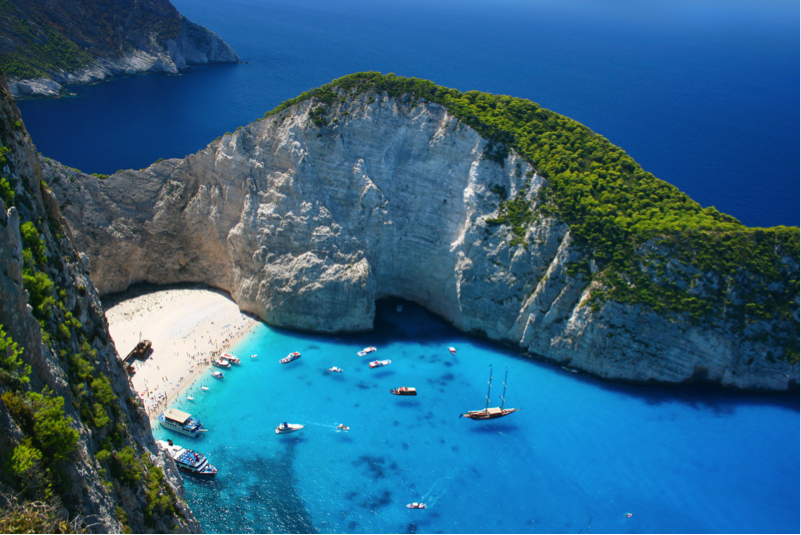
Photo Credits: Navagio Beach on Zakynthos © Petr Kopka / Shutterstock
9. Wrangel Island
The island is located in the Arctic Ocean, between the Chukchi Sea and East Siberian Sea. It is a major feeding ground for the grey whale migrating from Mexico and the northernmost nesting ground for 100 migratory bird species, many endangered. Currently, 417 species and subspecies of vascular plants have been identified on the island, double that of any other Arctic tundra territory of comparable size and more than any other Arctic island. It is considered to be world’s largest denning ground for polar bears—as many as 400 mothers have been known to land here in winter to raise their young. Wrangler also supports the largest population of Pacific walruses, and the only snow goose nesting colony in Asia. It is home to snowy owls, muskoxen, arctic foxes, and reindeer as well as massive populations of lemmings and seabirds. This reserve is now one of Russia's most treasured wildlife sanctuaries.
Admissions to the Wrangel Island reserve is strictly controlled with only official personnel and invited guests are allowed access to the reserve, protecting the unique and untainted ecosystem. In summer, when ice conditions allow, occasional tourist ships stop in at the Island.

Photo Credits: Sergey Gorshkov
10. Socotra Island
Socotra is a World Heritage site as well as a nature reserve Island with three islets in the Indian Ocean, an offshore territory of Yemen, near the horn of Somalia. This makes it the perfect destination for the adventurous and nature loving travellers. The Island is populated by approximately 50 000 people surrounded by Socotra’s stunning microclimates, exceptional biodiversity and Candyland – like features make it an inimitable paradise.
The Island is described as an ecotourism system as it is a place of botanical and zoological treasures with very limited infrastructure and an infant in the international tourism market. The most popular accommodation on the Island is camping on the beach at the number of campsites that allows for tourists to barbeque on the beach with beautiful mountain views in the background. The tourism is still gradually developing. The island is said to have more than 800 species of rare plants with unique and unusual shapes. The ecosystem is also made up of a number of species of coral, costal fish, crab, lobster and shrimp in the waters of the sea. The Island is home to the Dragon Blood Tree or Dracaena cinnabari, which is an umbrella shaped tree which is the main intrigue of the tourist that travel to Socotra.
The Island is difficult to access but not impossible. It can be accessible from Sharjah airport in the United Arab Emirates once a week, another better way to travel to Socotra Island is to fly to Dubai and connect to Sharjah using local ground transportation and catch your Socotra plane from there.
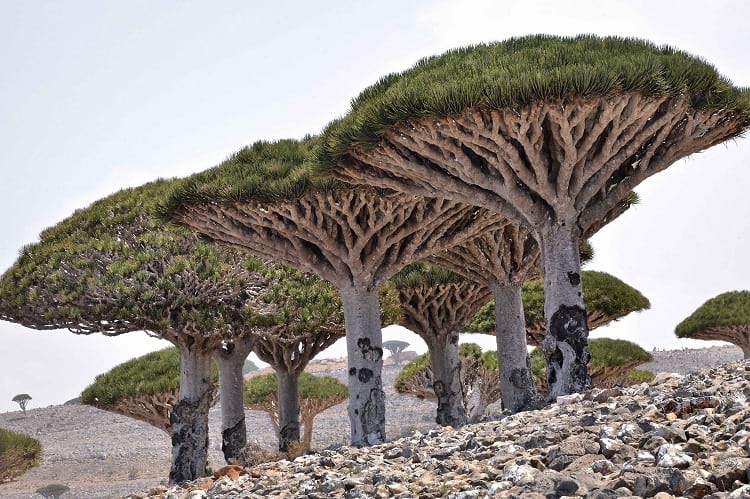
Photo Credits: Rod Waddington/Flickr
Do these places inspire you too? Where else would you wan to travel to?


